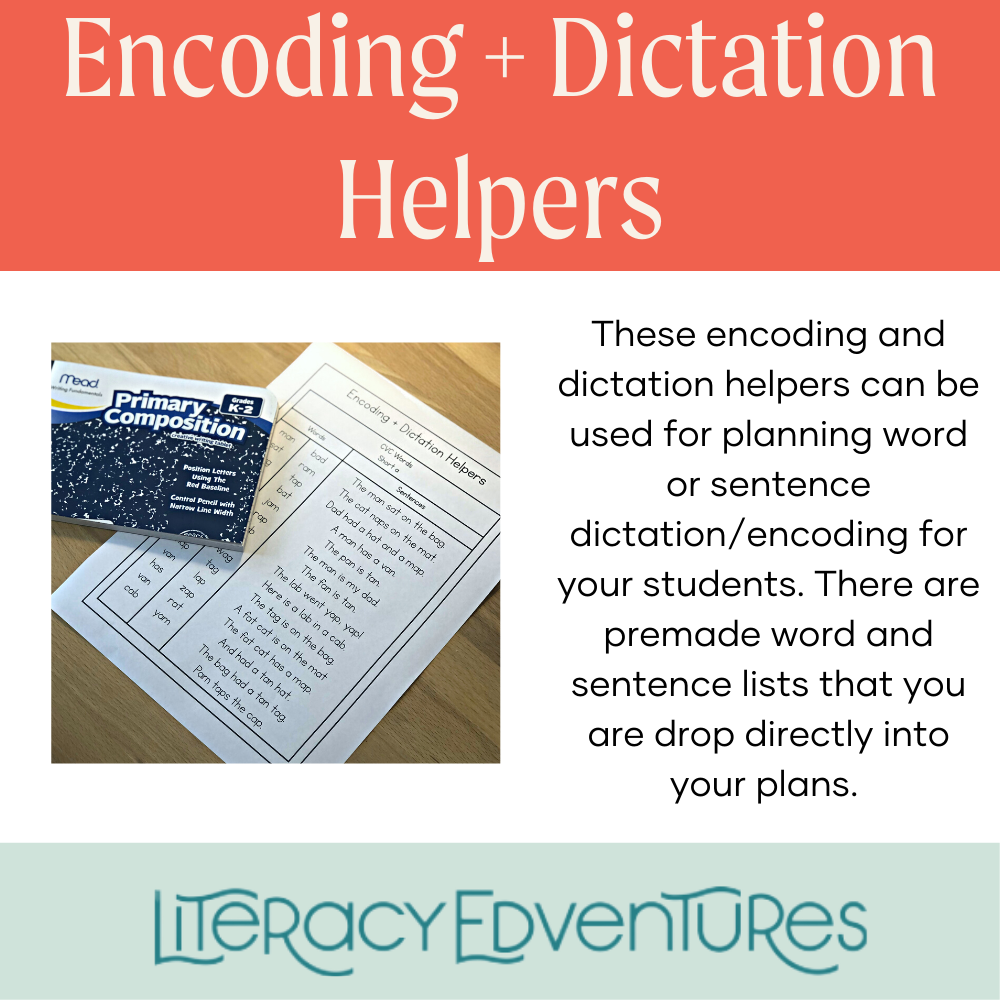Help! My Students Can’t Transfer Phonics Knowledge to Writing!!
Do you practice encoding with your students? If I am honest, when I was a classroom teacher, I NEVER practiced encoding. I was always so focused on decoding and spelling tests. I know, I know, but it’s true. But.. after lots of learning (and I still have more to do) I added encoding and dictation into my everyday lesson plan.
So what is encoding?
Encoding is the process of hearing a sound and then being able to write the symbol to represent it. If you missed my first blog post on encoding, you can find it here.
When we practice this alongside our phonics lessons, students recognize the connection. However, this (just like reading) does not come naturally to our students. Today, I am sharing three ways to help your students transfer their phonics knowledge to writing!
Tip #1 Explicitly model encoding and do it frequently
Take time each day to write sounds, a word, or a sentence with your students. As you are writing, think aloud for your students. This allows them to actually see and hear the process that you will be asking them to practice.
Teacher: Today we are going to write a brand new sentence and I want to show you what I am thinking about as we write it. I may also ask you to help me sound out some tough words. Are you ready?
Students: Yes
Teacher: My sentence is “My big dog is tan and red.” Can you repeat that sentence with me?
Students: /Counting on their fingers/ “My big dog is tan and red.”
Teacher: How many words are in my sentence?
Students: SIX
Teacher: /draws a line on the board for each word/ “My big dog is tan and red.’ Now let’s start writing our sentence.
“My ( I hear two sounds in the word my. The first sound I hear is /mmmmm/ I think I will write /m/ the next sound I here is /i/ and I know that at the end of a word or syllable /y/ sometimes says /i/, so I will write /y/.”
“Great! I now have the first word of my sentence. “My big dog is tan and red.” Let’s take a look at the next word. The teacher models this process for each word. Note: You can ask students to participate in shared writing by calling a few to the board to write the words as you are thinking aloud for them.
This process takes about 10 minutes. Sometimes, I only have time to encode a couple sounds or words and sometimes I have time to do an entire sentence. The important thing is that I do it each day in some form.
Tip #2 Review Previously taught phonics patterns
Sometimes we forget to spiral or review previously taught phonics patterns. The truth is, reviewing is often what helps it stick. When I am working on an encoding lesson, I try to include both old patterns and new patterns.
Download the first week of these encoding practice sheets here.
Tip #3 Use Sound Boxes
Using sound boxes is a great way to start encoding with your students. Sound boxes allow students to apply their phonemic awareness skills as they push chips to sound out the word, and then connect phonics to writing as they write the sounds they hear inside each box. I love using this activity in kindergarten once they have a few consonants and at least one vowel under their belt.
I hope that you found this post to be helpful!
If you would like to see my LIVE explanation of this, click here.
I have also included some sample encoding lessons for you to try in your classroom. You can download them below.
If you are interested in some other ways to help support decoding, check out these resources!




